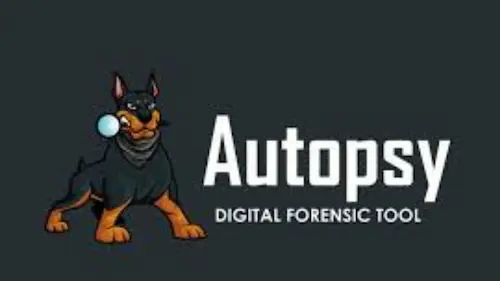What is Autopsy? How to Use It for Forensic Investigation


📅8/21/2025
👁️0 views
What is Autopsy? A Comprehensive Guide
Autopsy has become one of the most popular open-source digital forensic tools in the field. In order to recover and look at digital evidence, it is made to analyze hard disks, mobile devices, and other digital storage media. The Sleuth Kit (TSK), which highly goes with the name Autopsy, is a promising digital forensics investigation tool utilized by many primetime IT Security experts to functionalize numerous operations to resolve multiple cyber forensics concerns.
An extensive examination of the characteristics of an autopsy, its operation, installation procedures, and its use for forensic investigations is duly mentioned in this article.

What is Autopsy?
The Sleuth Kit (TSK), an open-source suite of digital forensics tools, has a graphical user interface called Autopsy. It makes it possible for cybersecurity experts, law enforcement organizations, and forensic investigators to effectively examine digital data.
| Primary Purpose | Digital forensic investigation, data recovery, and incident response. |
| Supported Platforms | Windows, Linux, and macOS. |
Key Features of Autopsy
Because of its extensive forensic capabilities, an Autopsy is a popular option for investigators. Here are a few of its salient characteristics:
- File System Analysis
- Recovers deleted files from a variety of file systems, including NTFS, FAT, EXT, and HFS+.
- Retrieves timestamps and file metadata for forensic analysis.
- Keyword Search & Indexing
- Uses keyword lists and regular expressions to conduct sophisticated searches.
- Faster results are obtained by using pre-indexed searches.
- Web Artifacts Analysis
- Retrieves the cache, cookies, and browsing history from popular browsers.
- Supports artifact analysis for Chrome, Firefox, Edge, and Safari.
- Email Analysis
- Recovers emails from disk images, both erased and extant.
- Accepts PST and MBOX file types.
- Hash Set Analysis
- Checks files against databases of hashes for illegal content and known malware.
- Supports custom hash lists and NSRL.
- Memory Forensics & Timeline Analysis
- Examines RAM dumps to find unusual activity and active processes.
- Gives a timeline of file system activities in a graphical
- Multi-User Collaboration
- Enables the simultaneous work of several forensic analysts on the same case.
- Supports case management that is centralized.

How Does Autopsy Work?
By offering a user-friendly graphical interface for examining disk images, raw files, and live systems, Autopsy streamlines digital forensic investigations.
Step-by-Step Process:
| Disk Imaging | Extracts a copy of a suspect’s mobile device or hard drive bit by bit. |
| Data Recovery | Locates and retrieves encrypted, hidden, or erased files. |
| Artifact Extraction | Gathers system logs, emails, chat messages, and browser history. |
| Malware Detection | Identifies dangers using YARA rules and hash comparison. |
| Case Reporting | Creates thorough forensic reports for court cases. |
Common Uses of Autopsy:
- Looking into online cyber crimes such as identity theft, fraud, and hacking.
- Gathering of digital evidence for law enforcement agencies.
- Analysis of malware and incident response.
How to Install Autopsy?
Installing Autopsy on Windows, Linux, and macOS is simple and free.
Installing Autopsy on Windows:
- Get the most recent version from https://www.autopsy.com, the official website.
- Launch the installation and adhere to the prompts displayed on the screen.
- Install the Java Runtime Environment (JRE) and any necessary components.
Installing Autopsy on Linux/macOS:
- The Autopsy repository can be cloned from GitHub.
- Install the necessary libraries and The Sleuth Kit (TSK).
- Utilizing terminal commands, compile and launch Autopsy.
How to Use Autopsy for Digital Forensics?
Basic Steps in Autopsy
After installation, follow these steps to use Autopsy for digital forensic analysis:
1. Create a New Case:
- Create a new case in Autopsy by entering information such as the case number and investigator’s name.
2. Add Evidence:
- Bring in live system data, RAM dumps, or disk images for analysis.
3. Analyze Files & Artifacts:
- To locate evidence, use hash comparison, chronology analysis, and keyword searches.
4. Generate Reports:
- Export results for legal use in CSV, HTML, and PDF formats.
Is Autopsy Legal?
Law enforcement organizations, private investigators, and security experts use Autopsy, a legal forensic tool, to analyze digital evidence.
Legal Uses:
- Police and cybersecurity teams conducting legal forensic investigations.
- Corporate inquiries regarding insider risks and data breaches.
- Hacking ethics and recovering digital evidence.
Illegal Uses:
- Unapproved examination of private or business equipment.
- Using Autopsy for privacy violations, espionage, or hacking.
Alternatives to Autopsy
Take a look at these forensic tools if you’re searching for alternatives to Autopsy:
| FTK (Forensic Toolkit) | Software for digital forensics that is sold commercially. |
| EnCase | Platform for forensic analysis at the enterprise level. |
| X-Ways Forensics | Forensic toolkit that is both powerful and lightweight. |
| Volatility | Memory forensics tool that is open source. |
| Magnet AXIOM | A contemporary forensic suite that supports mobile devices. |
Conclusion
Autopsy is a robust and cost-free digital forensic tool that makes virus analysis, data recovery, and cybercrime investigations easier. Security analysts, forensic investigators, and law enforcement organizations all make extensive use of it. Learning Autopsy is a crucial first step in your cybersecurity career if you want to become an expert in digital forensics.
In addition to this, we would like to say that Autopsy is very beneficial digital forensics tool that helps a lot to cyber investigators in so many ways in finding pieces of evidence present in digital forms. In order to learn this crucial digital forensics tool, you can start 1 Year Cybersecurity Diploma Course Powered by AI through Craw Security, the Top-Notch Cyber Forensics Investigation Training Institute in Delhi NCR.




